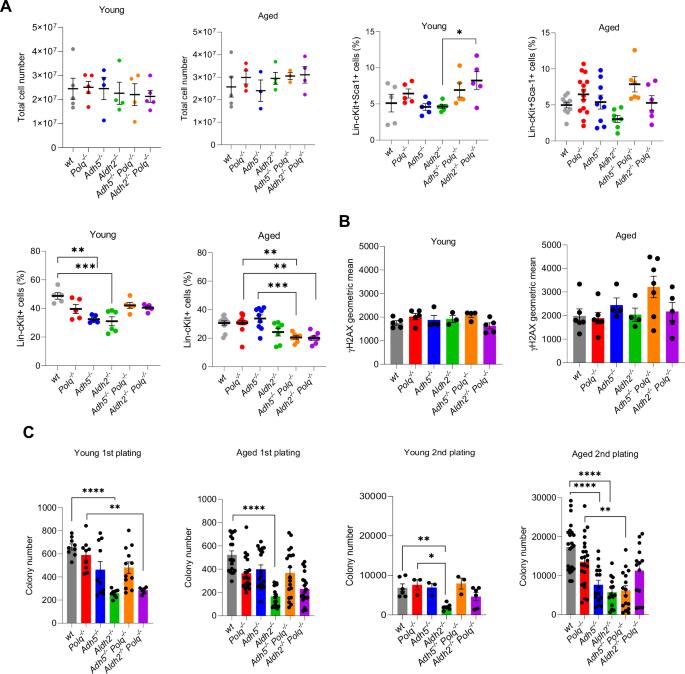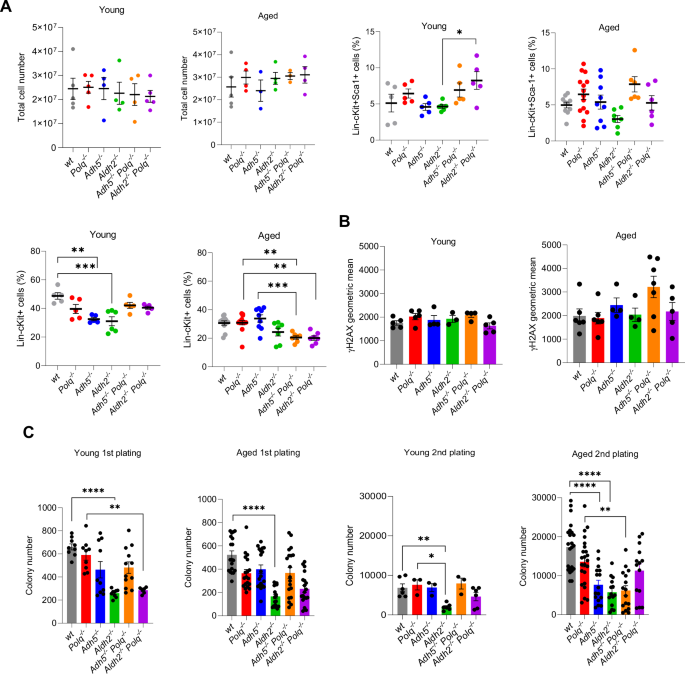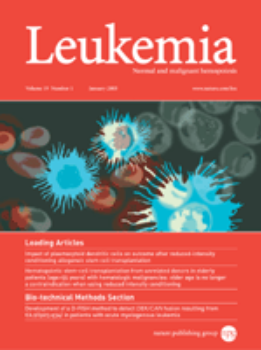ADH5/ALDH2脱氢酶和DNA聚合酶保护正常和恶性造血细胞免受甲醛攻击:治疗意义
IF 13.4
1区 医学
Q1 HEMATOLOGY
引用次数: 0
摘要
正常造血干细胞和祖细胞(HSPCs)暴露于生理水平的甲醛,但偶尔可能受到内源性和外源性来源产生的高水平甲醛的挑战。此外,白血病细胞受到致癌突变的压力,不断产生过量的甲醛。在这里,我们发现DNA聚合酶theta (Polθ)与乙醇脱氢酶5 (ADH5)和醛脱氢酶2 (ALDH2)协同作用,保护健康和恶性的HSPCs受到甲醛的攻击。ADH5和ALDH2代谢甲醛,而polθ介导的DNA修复通过微同源依赖的末端连接(TMEJ)保护细胞免受甲醛介导的DNA-蛋白交联引起的DNA双链断裂的致命影响。遗传或药物靶向ADH5或ALDH2增强了Polθ抑制剂在白血病细胞中的作用。因此,ADH5/ALDH2与Polθ协同保护偶发性高水平甲醛侵袭的正常HSPCs,抑制Polθ和ADH5或ALDH2可能具有抗白血病作用。本文章由计算机程序翻译,如有差异,请以英文原文为准。


ADH5/ALDH2 dehydrogenases and DNA polymerase theta protect normal and malignant hematopoietic cells from formaldehyde challenge: therapeutic implications
Normal hematopoietic stem and progenitor cells (HSPCs) are exposed to physiological levels of formaldehyde but occasionally may be challenged by high levels of formaldehyde generated by endogenous and exogenous sources. In addition, leukemia cells stressed by oncogenic mutations continuously produce excessive amounts of formaldehyde. Here, we show that DNA polymerase theta (Polθ) cooperates with alcohol dehydrogenase 5 (ADH5) and aldehyde dehydrogenase 2 (ALDH2) to protect healthy and malignant HSPCs challenged by formaldehyde. ADH5 and ALDH2 metabolize formaldehyde while Polθ-mediated DNA repair by microhomology-dependent end-joining (TMEJ) protects cells from the lethal effect of DNA double strand breaks resulting from formaldehyde-mediated DNA-protein crosslinks. Genetic or pharmacological targeting of ADH5 or ALDH2 enhanced the effect of Polθ inhibitors in leukemic cells. Thus, ADH5/ALDH2 cooperate with Polθ to protect normal HSPCs sporadically challenged by high levels of formaldehyde, and inhibition of Polθ and ADH5 or ALDH2 may exert an anti-leukemic effect.
求助全文
通过发布文献求助,成功后即可免费获取论文全文。
去求助
来源期刊

Leukemia
医学-血液学
CiteScore
18.10
自引率
3.50%
发文量
270
审稿时长
3-6 weeks
期刊介绍:
Title: Leukemia
Journal Overview:
Publishes high-quality, peer-reviewed research
Covers all aspects of research and treatment of leukemia and allied diseases
Includes studies of normal hemopoiesis due to comparative relevance
Topics of Interest:
Oncogenes
Growth factors
Stem cells
Leukemia genomics
Cell cycle
Signal transduction
Molecular targets for therapy
And more
Content Types:
Original research articles
Reviews
Letters
Correspondence
Comments elaborating on significant advances and covering topical issues
 求助内容:
求助内容: 应助结果提醒方式:
应助结果提醒方式:


